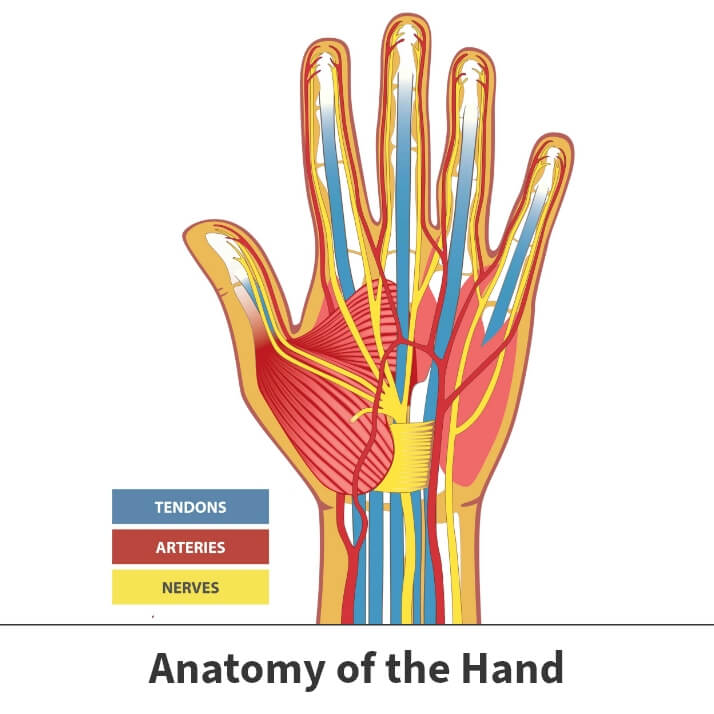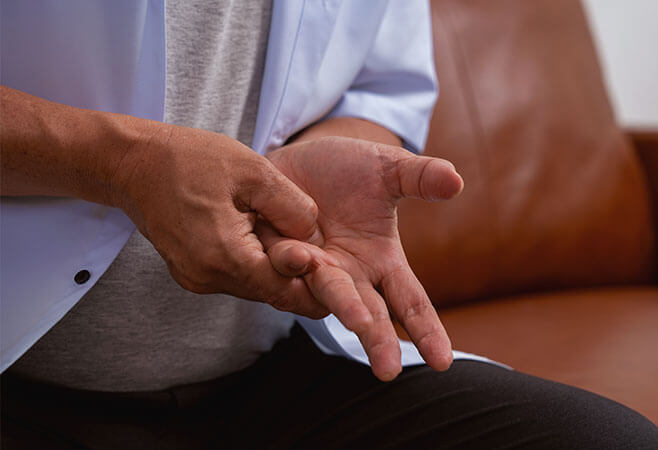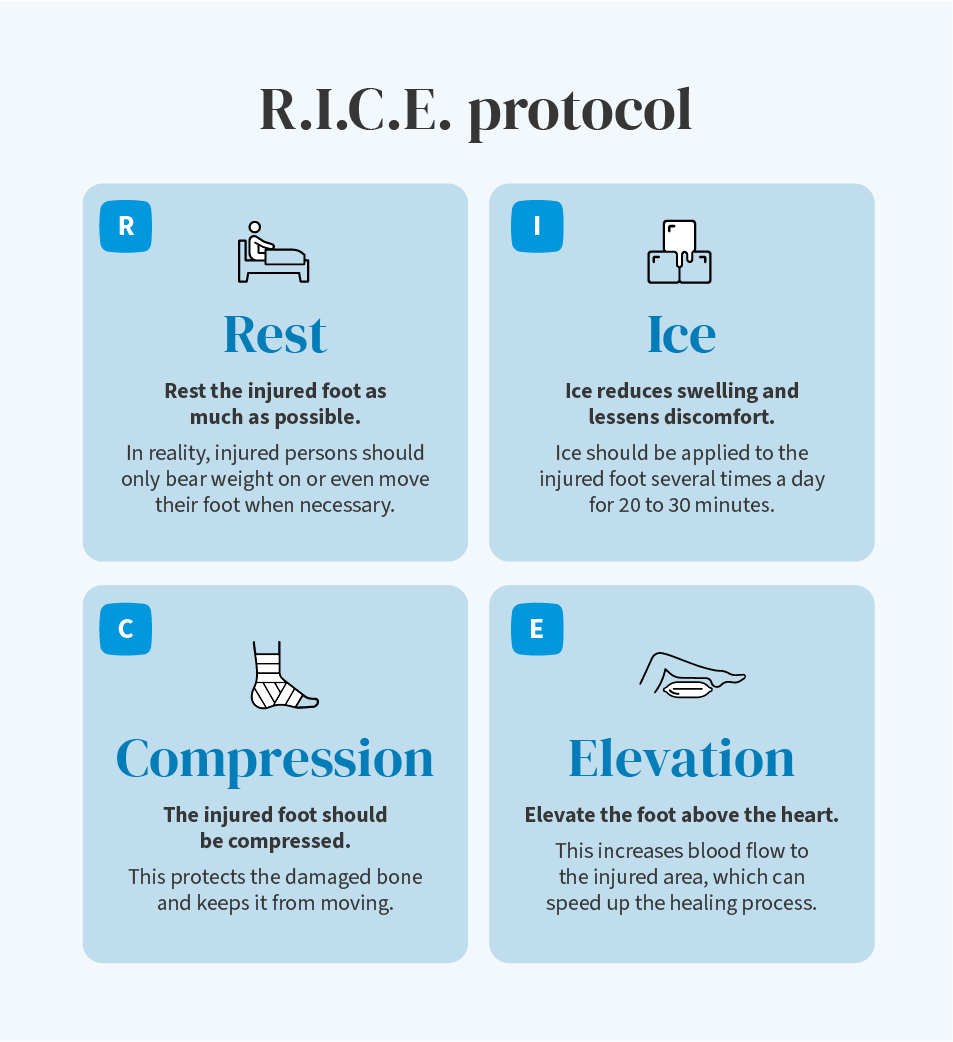Flexor tendonitis
Your flexor tendon can easily be damaged from sports or physical activity. The flexor tendon, made of tissues in the palm side of your hand, can make it difficult to bend your thumb or fingers. Flexor tendonitis is when the tendons connecting the forearm muscles to the fingers become inflamed or irritated. These tendons help control the movement of the fingers and are essential for tasks like gripping and grasping. Flexor tendonitis can be painful and sometimes stop hand movement altogether.
Anatomy

The tendons in your hand connect the muscles to the bone. When they contract, this causes the normal movement of the fingers. The muscles that cause the finger and thumb to move are in the forearm, where long tendons stretch down.
The extensor tendons (at the top of the hand) straighten the fingers. The flexor tendons on the palm side of your hand bend the fingers.
When you straighten or bend your fingers, your tendons move through small tunnels known as tendon sheaths. These tendon sheaths allow the tendons to remain next to the bone.
About
Flexor tendonitis can occur when there is a strain on the tendons. This strain can cause unwanted pain and stress.
Damage to the tendon in the forearm, wrist, palm, or along the finger can stop all movement in the finger. If a tendon becomes torn, any tension on it will create a rubber band effect and cause it to weaken. This slows the healing process.
If a deep cut occurs, damage to nerves or blood vessels may occur. This is very serious and requires immediate surgery to remedy.
Symptoms
There are a few common signs of flexor tendonitis:
- Inability to bend one or more finger joints
- Numbness in the fingertip
- Pain when a finger is bent
- Tenderness along the finger on the palm side of the hand
Causes
Inflammation is flexor tendonitis’s primary underlying cause. Inflammation is a positive bodily reaction. It is the immune system’s way of combating illness and healing injuries.
Occasionally, inflammation lasts for extended periods for various reasons such as underlying disease, poor dietary intake, potentially harmful lifestyle habits like excessive alcohol intake and cigarette smoking, and exposure to air or water-borne toxins.
Inflammation irritates affected cells and tissues. Over time, if its primary cause is not diagnosed and treated, the problem can result in tissue damage leading to unpleasant occurrences like tendonitis.
Overuse, repetitive motions, or direct trauma to the hand or wrist can also cause flexor tendonitis. The injury is common among athletes, musicians, and manual laborers who frequently use their hands.
Risk factors
Your risk of developing flexor tendonitis-causing inflammation increases if you:
- Take part in any sport or job that places undue or consistent pressure on your hand or forearm
- Engage in negative lifestyle habits like drinking large quantities of alcohol or smoking cigarettes
- Consume significant amounts of processed or unnatural foods
- Live or work in an environment filled with airborne toxins or drink polluted water
The injury may result from immune system diseases causing the body to attack soft tissues like tendons.

Diagnosis
Your Florida Orthopaedic Institute physician will evaluate your symptoms and discuss possible treatment options. It is always important to see a professional when an injury involves the fingers or hand.
Your physician will examine the range of motion in your hand by flexing your fingertips into a bending and straightening motion. To test strength, your physician may press on your non-injured fingers while you attempt to move the injured one.
Since flexor tendonitis causes strain, your physician may ask about your usual exercise or daily activities where the most tension is felt so that steps can be taken to reduce or eliminate the issue.
Complications
If not diagnosed and treated in the earliest possible stage, flexor tendonitis can result in mobility limitations and chronic pain. Serious tendon injuries like sharp cuts could threaten the health of surrounding structures like blood vessels and nerves and need immediate medical attention.
Treatment
After an examination, your physician will make a recommendation about treatment. Florida Orthopaedic Institute believes that all non-surgical methods should be explored before surgery.
A splint or brace can immobilize the affected area and promote healing in more severe cases. If symptoms persist or worsen, medical intervention may be necessary, such as corticosteroid injections or surgery to repair or replace damaged tendons.
Tendons cannot heal unless the ends touch, so surgery is recommended if a full tear occurs. If the flexor tendonitis is not as severe, physical therapy and options to reduce tension on the tendons will be explored. It is important to seek prompt medical attention for any flexor tendonitis symptoms to prevent further damage and ensure proper healing.
Nonsurgical treatments
Surgery is not essential to the healing of the tendon. Your physician may recommend splints or exercise programs to assist in the process.
Flexor tendonitis can be remedied through physical therapy as well. Proper exercise, as prescribed by your physician, can speed up the recovery process.
Surgical procedures
Surgery is sometimes needed and depends on what type of tendon is involved and if non-operative care has failed. Your Florida Orthopaedic Surgeon will discuss this with you.
Recovery
Mild cases may heal within several weeks using typical therapeutic methods such as rest, applying ice, and placing the injured finger inside a movement-restricting device.
- Rest – You should rest the injured tendon as much as possible. This means avoiding all movement whenever applicable. Any heavy lifting or significant exercise is strictly forbidden until noticeable improvement occurs.
- Ice – Applying ice to the affected areas for at least 20 minutes several times per day. Icing reduces inflammation.
- Compression – Compressing the wounded tendon with compression bandages can provide added support to the injury and keep surrounding tissues from moving frequently or unnecessarily.
- Elevation – Raising your arm above your heart increases blood circulation to the damaged areas. Increased blood flow speeds up the healing process and decreases inflammation.
More significant wounds or those requiring surgery might take many months to heal entirely. Moreover, recovery from such injuries often includes a course of physical therapy.

Prevention
Flexor tendonitis might be preventable through safeguards including:
- Keeping finger, forearm, and elbow muscles strong
- Properly loosening hand and finger muscles before any physically demanding job or leisure pursuit
- Cutting back on or quitting cigarette smoking and excessive alcohol intake
- Eating a healthy diet comprised of natural and inflammation-fighting foods
Pain or other symptom-causing activities should be stopped at the first sign of trouble and brought to a doctor’s attention as soon as possible.
Related specialties
- Basal Joint Surgery
- Carpal Tunnel Syndrome
- De Quervain's Tenosynovitis
- Dislocated Finger
- Distal Radius Fracture (Broken Wrist)
- Dupuytren’s Disease
- Fractured Fingers
- Functional Nerve Transfers of the Hand
- Ganglion Cysts
- Hand & Finger Replantation
- Hand Nerve Decompression
- Hand Skin Grafts
- Nerve Pain
- Peripheral Nerve Surgery (Hand) Revision
- Revascularization of the Hand
- Rheumatoid Arthritis of the Hand
- Sports Wrist & Hand Injuries
- Sprained Wrist
- Sudden Acute Finger, Hand & Wrist Injuries
- Targeted Muscle Reinnervation (TMR)
- Tendon Transfers of the Hand
- Thumb Ulnar Collateral Ligament Injuries
- Trigger Finger
- Ulnar Neuritis
- WALANT (Wide Awake Local Anesthesia No Tourniquet)
- Wrist Arthroscopy
- Wrist Fractures
- Wrist Tendonitis
